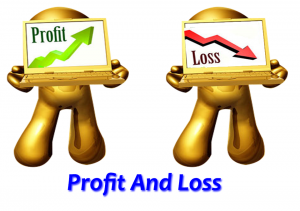The 8 Key Concepts of Profit and Loss
26 June, 2020

There is no less harsh way of saying this, but if you’re not making profit, you’re doing something very wrong. Thankfully, you’re currently reading this blog and I can help you fix that no-profit situation. But how? By helping you gain an understanding of profit and loss, you’ll hopefully make some positive changes to improve your take on business and your cash flow.
So What Is Profit?
Profit is simply the money left from sales after all the expenses, supplies cost, men hours, etc. have been fully paid.
If you made a total sales of $150,000, that’s not profit, that’s just cash! You will have to subtract all that was needed to create your product or enable you to render services to get the number/amount which stands for your profit.
Here’s an example:
Suppose you spent a total of $100,000 to make your total sales possible, then $150,000 – $100,000 = $50,000 PROFIT.
That’s not bad, especially if your cash flow cycle is pretty fast moving. A profit of $50,000 for a cash flow cycle of 60 days means you’re making $25,000 of pure profit per month. Anything that is not profit is considered as a loss.
8 Key Concepts for Understanding Your Profit and Loss
Here are some key concepts that can be contained in your profit and loss statements.
Sales or turnover is the total of the amount you get from selling goods or services customers or clients within a certain time period.
Cost of goods sold is the total of the capital you used to buy your goods or produce your services. Take note that this amount will vary from business to business. For instance, a restaurateur would compute this as the total cost for utilities, employees, space, food, equipment, and more; whereas a clothing manufacturer would factor in utilities, labour, materials, and equipment used for making garments.
Gross profit is the amount you get after subtracting the cost of goods from your sales.
SALES – COST OF GOODS SOLD = GROSS PROFIT
Expenses is what it costs you to run your business. This may include advertising, insurance, council rates, power, and printing.
EBITDA or Earnings before interest tax depreciation and amortisation is the amount of return a business owner or an investor or business owner can get prior to looking after debt and paying taxes.
Depreciation is the amount or percentage of amount which accounts for the wear and tear of assets you use in running your business to generate some income. This is a loss.
Tax is what you are obliged by law to pay the Inland Revenue.
Net profit is the amount you get after subtracting your expenses from your sales.
SALES – TOTAL EXPENSES = NET PROFIT
The most important tool a business owner can have is the profit equation. It doesn’t get more black and white than that. Whether you are a complete business rookie or a decades-long veteran, as long as you are making cash and turning in some profit, your business will survive for years. That’s the reality of business.
Want to understand your business more? Then bookmark this blog and keep on reading the next installments of the series! You’ll be glad you did!
For questions and consultations, don’t hesitate to contact me or CMK accountants for professional help. Reach out and connect with me on Facebook and Linkedin if you’re a business owner in New Zealand to know more great tips on the best ways to manage your business’ finances for some great profits!


